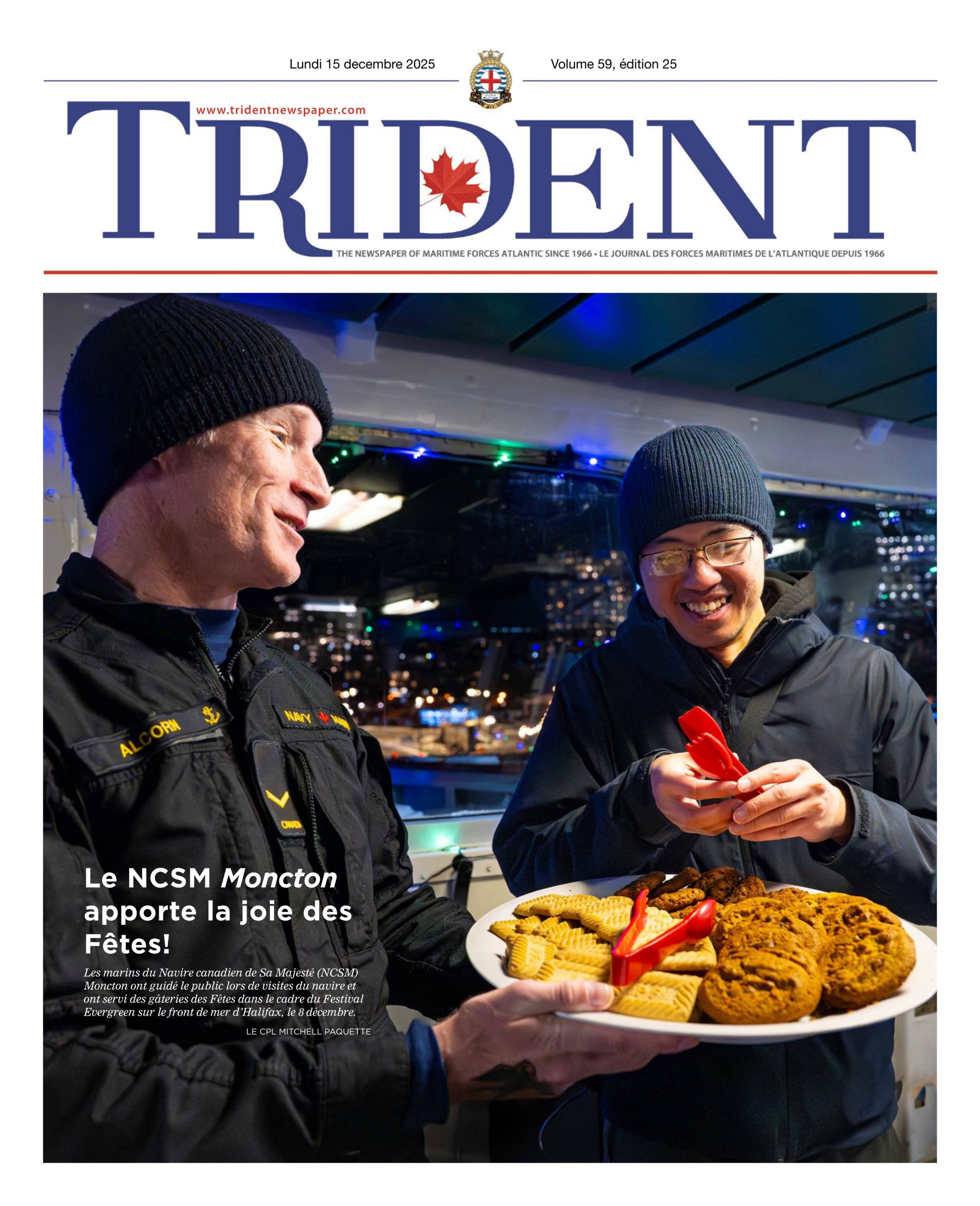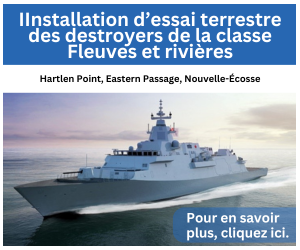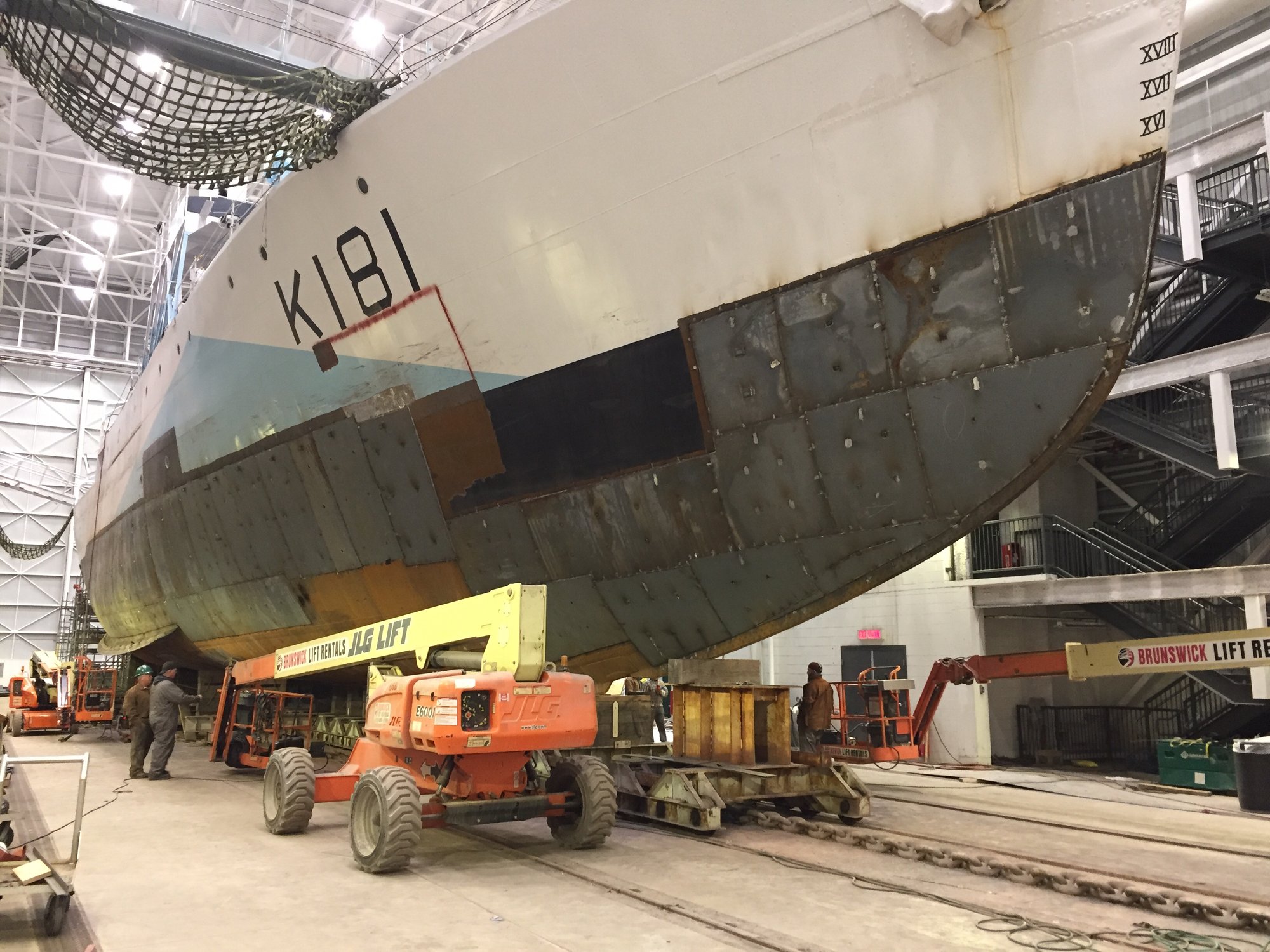
SOUMIS
New underwater hull plating to extend life of HMCS Sackville
By CPO1 (Ret’d) Pat Devenish,
Canadian Naval Memorial Trust
Many are likely wondering what Canada’s National Naval Memorial has been up to these past few months as she has not been at her normal winter berth in HMC Dockyard. In order to explain that though, we have to take a quick look back 80 years, when HMCS Sackville was first being built in the slips in Saint John, New Brunswick.
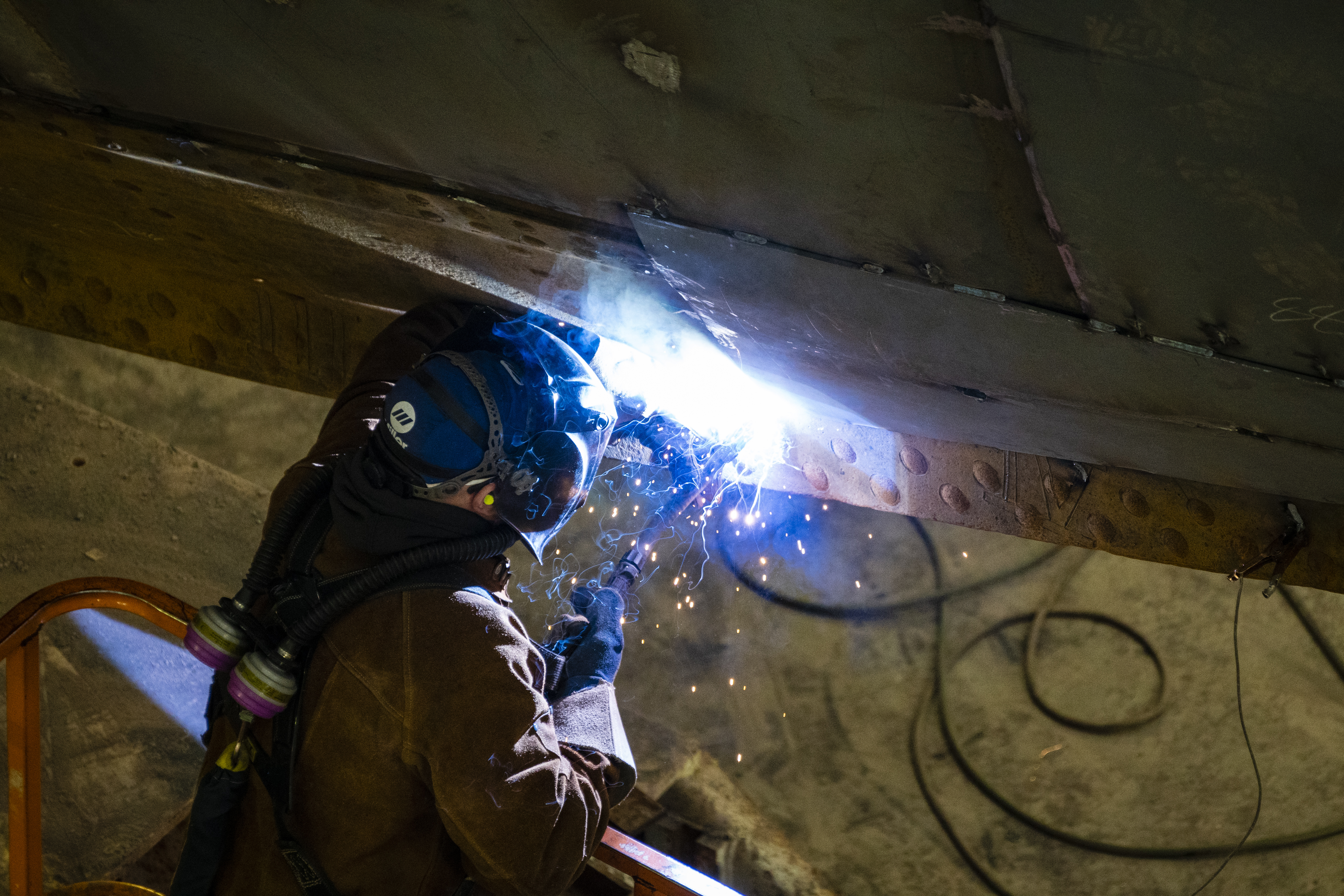
COURTESY OF SANDY MCCLEARN, CNMT
The Flower-class corvettes, or the “cheap and nasties” as Winston Churchill coined them, were meant as a stop gap measure until Allied fleets could build up sufficient numbers of frigates and destroyers for convoy escort duties. The corvettes could be built in small yards, with relatively unskilled labour, and their completion time at the height of production was measured in mere months. Of the roughly 270 Flower-class corvettes built shortly before and during the Second World War, 123 of these were built in Canadian shipyards – small shipyards we normally don’t associate with shipbuilding, with place names like Collingwood, Kingston, Thunder Bay, Montreal and Toronto. Of all these 270 Flower-class corvettes to sail with the Navies of Canada, the UK, Norway, France, Poland, the United States and Australia, only one remains; that one is your National Naval Memorial: HMCS Sackville, named for Sackville, New Brunswick.
Throughout her career following the Second World War, Sackville was employed in various duties as a Canadian Forces Auxiliary Vessel, and was drydocked once every five to eight years to inspect the hull and underwater fittings. As time passed, several areas were cut out and replaced, most notably in the bow and stern areas. When the ship was lifted out of the water in 2018, a thorough measuring was conducted of the state of the hull, and the structure and the thickness of the underwater portion of the plating. There was much head scratching around this time, as the underwater portion of the hull was gridded in roughly one square foot sections and thickness measurements were taken. After about three months, the hull looked like a giant chess board with numbers indicating plate thickness and frame placing. The prognosis initially was not promising; the only medium-to-long range solution to the hull thinning problem was the removal of the original 1940s steel plate, to be replaced with a new steel plate of roughly quarter-inch thickness.
An expert marine salvager was enlisted to have a look at the hull, and he put our minds at ease by explaining that such a process was feasible and in fact had been done on several former US Navy vessels. The problem faced by the Canadian Naval Memorial Trust (CNMT) in 2018 was we had neither the resources nor the time to reskin the ship. Was there a solution that would buy us a few years with the limited resources available?
Though not an industry standard for long-term repair, the CNMT decided that as an interim, the current underwater portion of the hull could be double plated, and the framing on the inside could also be strengthened to provide a base for a reskinning of the ship five to ten years down the road. This is where we find ourselves today. The doubling of the plate has added a negligible amount to the ships displacement from a stability point of view, but it will ensure watertight integrity for Sackville until we are able to reskin the hull as planned.
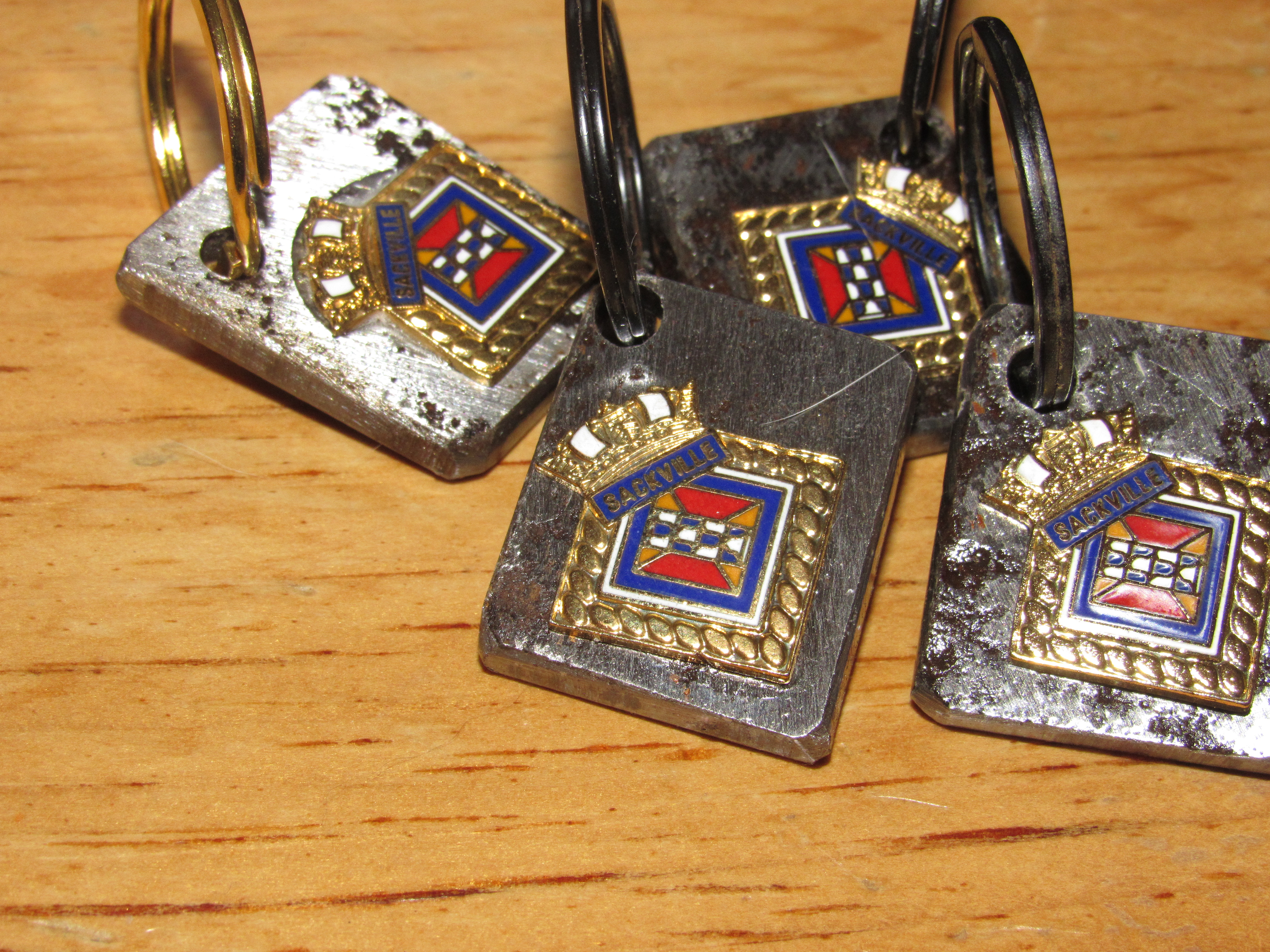
SOUMIS
Part of our problem stems from the corvette’s simplicity of design; she has no longitudinal structure other than her decks. The structural strength of the hull is therefore carried by the plating itself, making it such an important component to this design. Approximately 30 percent of the underwater portion of the hull was double plated during the 2018 docking, with the remainder being completed this winter, and an expected float-up date in May. At that point, the ship will have bought herself some time, but knowing what lies ahead, the Trust will be busy the next few years raising funds for the eventual reskinning of Sackville, as well as the fitting of an active cathodic protection system. This final phase of repairs should take the ship well into the next generations of volunteer crews.
On a lighter note, prior to and during the 2018 docking, much deteriorated metal was removed, both to gain access to ‘good’ metal but also in the process of asbestos remediation. During this time, approximately 300 pounds of suitable material was saved and cleaned up, and now you can own a piece of HMCS Sackville’s original steel in the form of a keychain. These are a lasting keepsake of the ship’s rich history and can be obtained for $7.50 each by contacting the ship’s Chief ERA, Pat Devenish, at devenishp@yahoo.ca. All proceeds will go towards the reskinning of HMCS Sackville.


